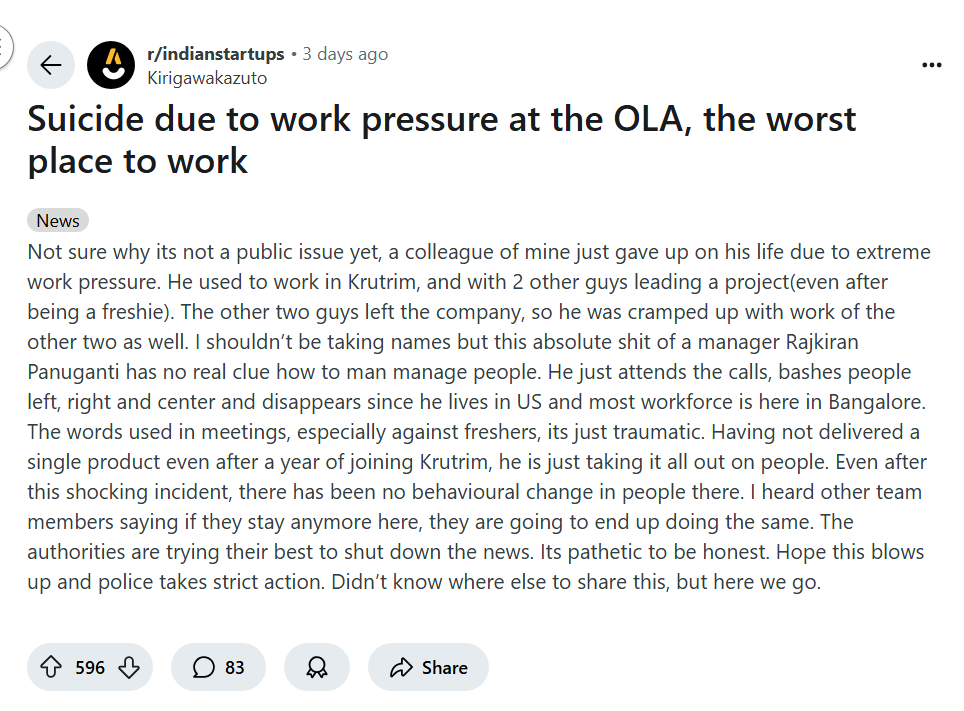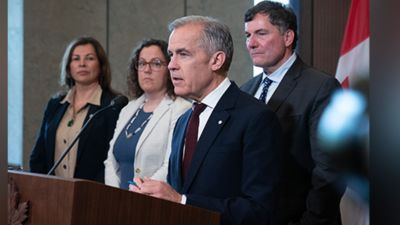A recent incident in Bengaluru has ignited conversations across the country about workplace mental health and corporate pressure. An Ola Krutim employee, Nikhil Somwanshi, identified as a software engineer, tragically died by suicide on 8th of May, leaving behind a concern that has led many to question the company’s work environment.
The techie was reportedly found dead in his residence, and while the official cause of death is being investigated, the Reddit post by several employees hints at overwhelming work-related stress. Following the incident, social media platforms, especially LinkedIn and X (formerly Twitter), have been flooded with discussions about the harsh realities of toxic corporate cultures, particularly in India’s fast-paced startup and tech ecosystem.

Public Reaction
Netizens allege that the victim was under constant pressure at work, pointing fingers at the management and company culture at Ola Krutim. Some claimed that employees were expected to work extended hours with minimal support or regard for mental well-being. The situation has reignited debates about the long-standing issue of burnout in the Indian tech industry, where long workdays, unrealistic deadlines, and poor work-life balance are often normalized.
While Ola has yet to make a formal statement addressing the allegations, the public reaction has been swift and intense. Several former employees and industry professionals have come forward to share similar experiences at various companies, underlining that this issue extends beyond one firm.
Experts Opinion
Mental health experts have stressed the importance of creating supportive work environments where employees feel heard, valued, and protected from undue stress. They have urged companies to adopt stronger mental health policies, introduce professional counselling options, and ensure reasonable workloads. This heartbreaking incident serves as a grim reminder of the unseen toll of high-pressure work cultures. As India’s tech industry continues to boom, it is vital for organizations to reassess how they treat their most valuable assets – their employees.












